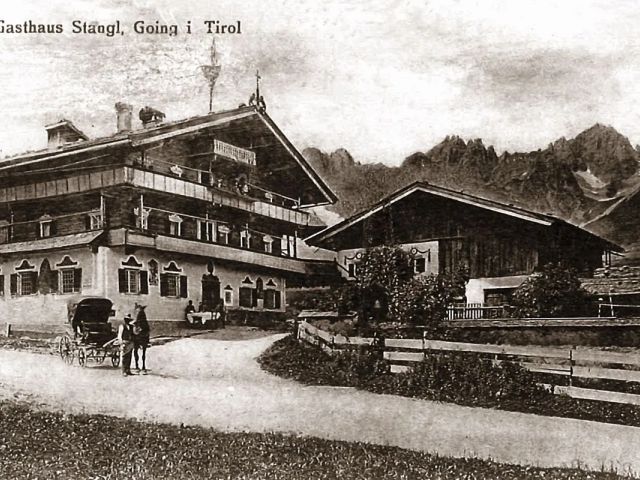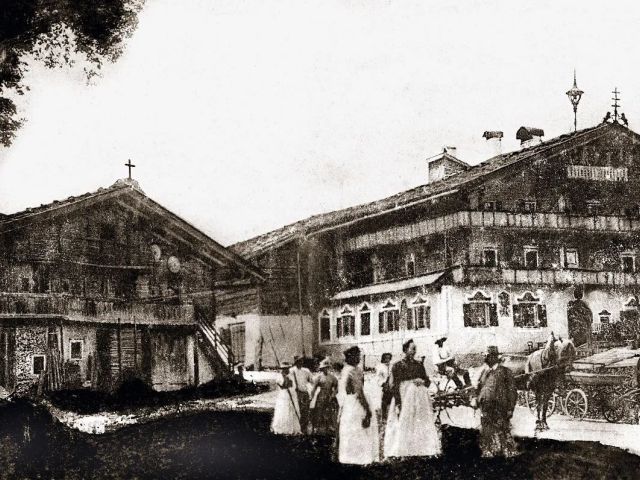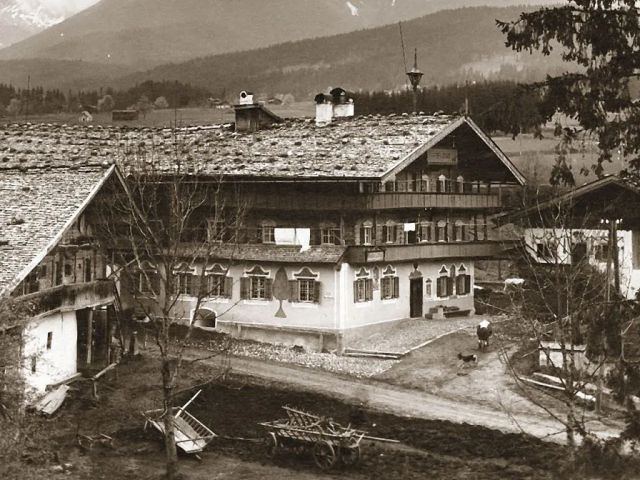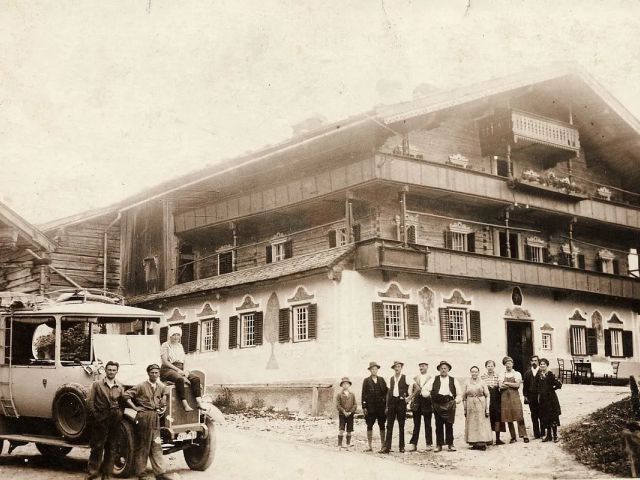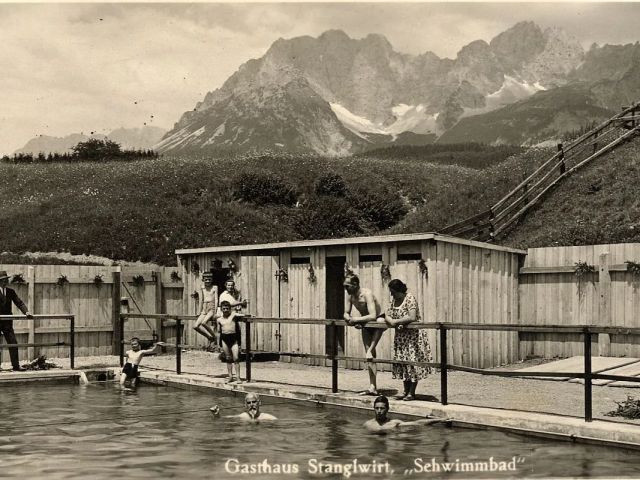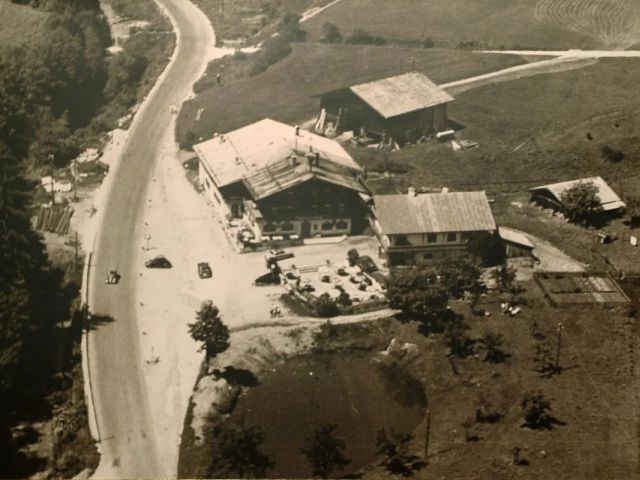The venerable Stanglwirt knows a story or two and has sheltered, fed and entertained its guests for more than four centuries...
More information1539 - 1946
The history of the Stanglwirt begins in the sixteenth century. The region is seized with silver and copper fever and almost overnight, adventurers are suddenly rushing into the area. At the time, Kitzbühel is still a little town and will soon be bursting at the seams, so the authorities – as the biggest landowners – assign land to the miners. Wolfgang Widmer is one of these miners given land on the Prama, a region that gets its name from the blackberry bushes that grow wild there.
Widmer is lucky. His plot of land, which is very well-situated close to the crossing of the road to St. Johann, the Inn Valley and the mine in the Röhrerbühel area, also has fresh spring water, making it is an ideal site for a tavern. But this did not happen straight away.
In summer 1564, plague reaches the region, with an estimated 500 people falling victim in Kitzbühel alone. The authorities in Kitzbühel ask Widmer to open his house to guests, as in those days, wine is regarded as a medicine and opening a tavern is seen as a way to "immunise" the miners. The "Inn on the Prama" is born.
In 1567, the innkeeper on the Prama receives a licence to sell wine, as well as being allowed to sell small snacks to go with it. This, coupled with the tavern's good location, means that it becomes extremely popular with the miners, who are happy to stop off at Widmer's on their way home from the mines.
Wolfgang Widmer dies in 1584, 21 years after opening the Inn on the Prama and his estate goes to Martin Schaumberger, the husband of Widmer's foster-daughter.
In 1588, Martin Schaumberger is granted permission from the authorities in Kitzbühel to organise wedding banquets, along with funerals, baptisms and marriages, and so extends the inn. This annoys the innkeepers in St. Johann and Kitzbühel and they take action against the unwelcome competitor from Going.
After countless complaints, Raimund Baron of Lamberg, who is a member of the ruling class in Kitzbühel, finally makes his judgement and only allows Schaumberger to organise "funeral banquets" if the deceased are being buried in Going. All these events are also limited to a maximum of two tables, with ten to twelve people on each table. The Inn on the Prama has to wait until 2 April 1609 to receive its "full gastronomic licence".
At the end of October 1618, the government grants Schaumberger a "full gastronomic licence" covering all "occasions". But the order is never executed and the privilege never issued. The incident becomes the basis for many later disputes.
The golden years of mining are also coming to an end in 1630 and Schaumberger looks for a tenant for his inn. In 1642, he sells the Inn on the Prama to his grandson Hans Stangl, who in 1643, gives the inn the name by which it is still known today.
Because the official licence has never been executed, the dispute with the Dorfwirt from Going flares up again, and until his death in 1676, Hans Stangl has to defend himself against his envious colleagues. Nevertheless, the Stanglwirt is highly popular and becomes a meeting place for miners, farmers and a host of petty traders and their carts.
The turn of the eighteenth century is marked by mercantilism, the precursor of capitalism. Trade flourishes and roads are developed to transport the salt, ore, wine and metals. Christian Stangl, who took over the inn from his father Hans, seizes the moment. When the rulers ask the innkeepers to provide shelter for the increasing cart traffic, he builds a parking shed for the carts right next to the inn, so that the carters can spend the night at the Stanglwirt. More than 100 years after its foundation, the Inn on the Prama is finally granted all the necessary licences.
A golden era begins in 1714 when Sebastian Schlechter takes over the Stanglwirt. Schlechter proves to be a brilliant businessman, making a respectable fortune by trading salt and other goods. In 1720, he builds the Stangl Inn.
In 1753, his equally talented son Sebastian II successfully continues his father's work and turns the Stanglwirt into an important trading hub for cheese, salt, wine and iron. Many of relatives of the Stanglwirt's innkeeper acquire property in Ellmau and St. Johann and start to open inns in the region.
The golden age of the Stanglwirt ends abruptly with the occupation by Napoleon's troops and the Tyrolean Fight for Freedom. Sebastian III has to witness the Bavarian and French troops coming from St. Johann and leaving a trail of devastation and destruction up to Ellmau. The Stanglwirt is also hotly contested, but in Captain Josef Schlechter, one of the innkeeper's sons, provides a significant leader in the Tyrolean Fight for Freedom.
A new age begins in the Stanglwirt in 1889, with the arrival of Maria "Marie" Schlechter (née Hauser). Marie's family owns a distillery, a large inn at Luech in Kirchbichl and the Schnablwirt in Going, which Marie's father, Josef Hauser, instructs her to run. The Schnablwirt quickly develops into a serious competitor under her control, so you can hardly blame the Stanglwirt owner Balthasar Schlechter for marrying her in 1889. This proves to be a wise decision.
Difficult times
The rail link through the Brixen Valley is completed in 1875 and results in serious financial losses for the Stanglwirt. Towards the end of the nineteenth century, the Stanglhof farm finances hit rock bottom and several fields, as well as the Stanglalm pasture on the Kitzbüheler Horn, have to be sold. But the young innkeeper Marie is blessed with great business sense and makes sure that the Stanglwirt bucks the trend and becomes a popular place to stop.
Marie also proves to be ahead of her time in the 1880s by quickly recognising the opportunities of tourism and printing a postcard showing a view of the inn.
Marie Schlechter may be a successful businesswoman, but her private life, with her difficult husband Balthasar, is far from perfect. Finally it is all too much for her. She leaves him and only returns on condition that he makes her the co-owner. When Balthasar Schlechter dies in 1912, Marie continues to run the inn, proving not only to be an accomplished restaurateur and excellent farmer, but also with an exceptional eye for the cattle and timber trade. This remarkable woman controls the destiny of the inn for more than half a century and her inspirational joie de vivre ensures that the Stanglwirt's reputation spreads throughout the land.
A devastating fire disaster.
When the Gasthof Stangl inn was built in 1722, a fire protection pond was created in front of it, which turns out to be a stroke of luck on 7 July 1930. Around lunchtime, a fire starts in an outbuilding of the main house, which was built entirely of wood, and its flames are about to spread to the inn. By combining forces, the family and locals finally managed to bring the dangerous situation under control.
The charitable donor
Sebastian Schlechter III (1763-1826) was already known as a benefactor and had donated the grand organ to the church is Going. Public welfare was also an important issue for Marie Schlechter. In 1935, she donates a glass window for Going's parish church and organises the first singers' gathering in the Stanglwirt. The friendly Stanglwirt hostess plays the guitar and simply loves to sing, which makes the Stanglwirt the perfect setting for socialising, even attracting regular visits from important gentlemen such as the Barons Rothschild or Sachs. The Wilder Kaiser is also extremely important to Marie and she becomes a kind of patron saint for all mountaineers.
Marie Schlechter has no children and when she reaches 80 years of age, she looks around for a worthy successor, finding the ideal candidate in Anna Seibl, her grand niece on her mother's side. Marie adopts the hard-working Anna under her maiden name Hauser, and finally in 1944, hands over the entire estate, requesting that the name of Hauser be preserved for future generations.
On 15 December 1946, Maria "Marie" Schlechter dies and her final resting place is the family grave in the graveyard of the "Zum heiligen Kreuz" parish church in Going. It is largely due to her that the Stanglwirt has been able to develop into an international luxury resort.



